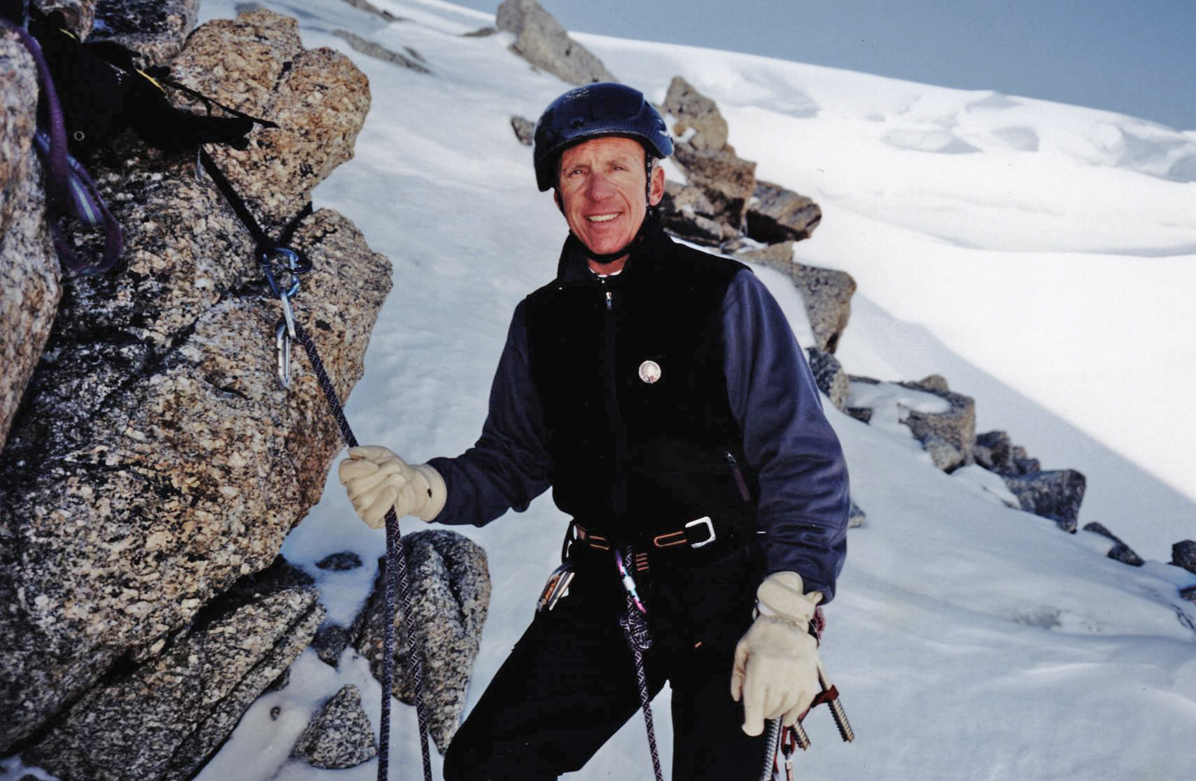A rope joins two beings who have only one life; the guide for some hours ties himself to an unknown man who is going to become a friend. When two men share the best and the worst, they are no longer strangers. The guide does not climb for himself; he opens the gates of his mountains for his companion. Gaston Rebuffat, Between Heaven and Earth
Guides
Hiring a guide is somewhat uncommon here in the United States. Very few US climbers that I know have ever climbed with a guide. This is in contrast to Europe, where guided climbing is much more common.
Hiring a guide can be an excellent experience. A good guide will not only guide you up a route, but will also teach you skills that will carry over to unguided climbing going forward.
The process of hiring a guide is different in Europe than it is in North America. In the United States, many of the more popular climbing areas are located within national park boundaries. In these national parks, the Federal Government awards guiding “concessions” to selected guide companies. Unless a guide is affiliated with one of these concessions, that guide is not allowed to guide in that area. In addition, there are often restrictions on which routes are allowed to be guided, and which are off limits to guided parties. (For example, on Mount Rainier, no guiding is allowed on Ptarmigan Ridge.)
Because you’re working with a company as opposed to an individual guide, it may be difficult, for example, to retain the same guide if you want to undertake guided climbing in Grand Teton National Park, Mount Rainier, and Rocky Mountain Park. Because of the concession restrictions, you will likely be forced to use three separate guides, one for each location.
Regulations are a bit more relaxed outside of national parks, but many federal and state lands regulate guiding activities. It is often the case that some sort of commercial permit is required to legally guide on public lands. The reason usually given for these restrictions is the need for quality control. Personally, I think that this justification is somewhat lame. I participated in a guided class in a national park that was attended by a park ranger who was there to “audit” the guide service and assess whether or not their guide permit should be extended. It was abundantly clear that the auditing ranger knew little or nothing about climbing. Unless somebody died during the class, it would have been pretty much impossible for him to draw any valid conclusions as to the quality of the services provided.
However, government oversight of some sort isn’t necessarily a bad idea. This is because, in the United States, there is generally no requirement that a guide have any formal training. This is in stark contrast to Europe, where every professional guide must complete a very rigorous, multi-year program in the guiding profession. In Europe, the UIAGM (or IFMGA depending on the language) is the body that must certify an aspiring guide. Without this certification, a person can not legally guide in Europe. In the US, they regulate real estate agents, lawyers, and hair dressers, but anyone who wants to can call himself a guide.
However, although certification is not mandatory in the United States, some guides do go through a certification process. In the USA, the equivalent of the UIAGM is the American Mountain Guide Association (AMGA.) The AMGA provides training and certification for guides. However, not all certifications are equal. The AMGA provides training and certification in a number of climbing disciplines, including “Certified Single Pitch Instructor”; “Certified Alpine Guide” “Certified Climbing Wall Instructor.” These various certifications clearly involve widely varying degrees of competence and expertise. So, it’s not enough to simply know that your guide is AMGA certified. It is much more important to know exactly what disciplines that the certification applies to. There are very few US guides who are certified across all of the AMGA disciplines. To make the situation even more confusing, guide services are often referred to as “AMGA accredited.” However, this doesn’t mean that all of the guides at that services are certified.
Don’t take this to mean that American guides are unqualified. There are many good guides in the US, regardless of certification. However, the lack of consistent requirements means that you need to do more homework when checking on your potential guide’s qualifications.
So, when compared with Europe, the situation in the US manages to be both more complex in terms of regulations, and yet less transparent and consistent in terms of guide qualifications.
With regards to costs and booking procedures, North America also differs significantly from Europe. In North America, you typically reserve a guided trip some time in advance, and you pay a fixed fee by the day for the guide’s time. Travel expenses, food, etc. are extra. Differing guide companies have different policies regarding refunds, so it makes sense to ask what will happen if your climb is cancelled or cut short due to bad weather or other circumstances. Depending on the situation and policies, they might refund your money, might offer to reschedule, or you could just be out of the money.


Some things I learned from Barry Blanchard:
